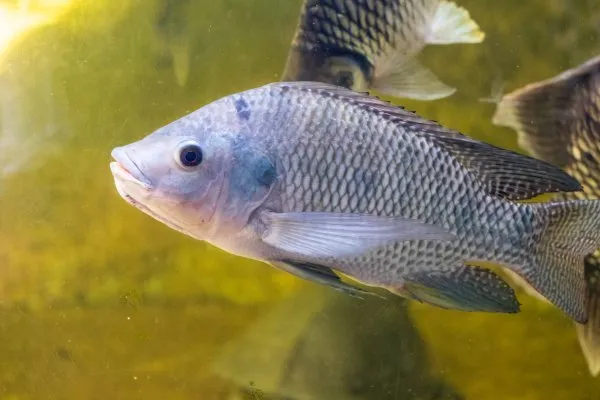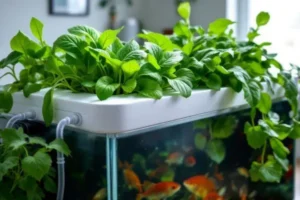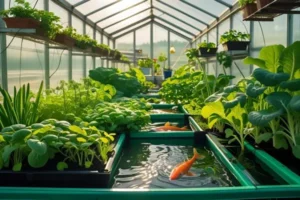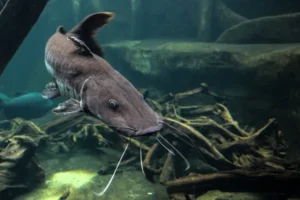Imagine harvesting fresh vegetables and protein-rich fish from the same system, using 90% less water than traditional farming. This isn’t a futuristic dream—it’s the reality of tilapia aquaponics, a sustainable farming method that’s revolutionizing how we think about food production.
Tilapia aquaponics combines fish farming with soilless plant cultivation, creating a symbiotic ecosystem where fish waste provides nutrients for plants, and plants filter water for fish. With global food security concerns rising and water scarcity affecting millions, this closed-loop system offers a practical solution for both backyard enthusiasts and commercial producers.
Whether you’re a beginner looking to start your first aquaponics system or an experienced farmer considering scaling up, understanding tilapia aquaponics can transform your approach to sustainable food production. This comprehensive guide will walk you through everything from system setup to profitability analysis, ensuring you have the knowledge to succeed in this exciting field.
Why Tilapia is the Perfect Fish for Aquaponics Systems
Tilapia stands out as the gold standard for aquaponics systems, and for good reason. These remarkable fish possess unique characteristics that make them ideally suited for both novice and experienced aquaponics practitioners.
Hardiness and Adaptability
Tilapia demonstrates exceptional resilience to varying water conditions, making them forgiving for beginners learning to balance their systems. Unlike sensitive species such as trout, tilapia can tolerate minor fluctuations in water quality without experiencing stress or mortality. They adapt well to different system designs, from simple media beds to complex recirculating systems, and can thrive in both indoor and outdoor environments.
Fast Growth Rates
One of tilapia’s most attractive features is their impressive growth rate. Under optimal conditions, tilapia can reach harvest weight of 1-2 pounds (0.45-0.9 kg) in just 6-8 months. This rapid growth translates to quicker returns on investment and more frequent harvests compared to slower-growing species like bass or catfish.
Temperature Tolerance
Tilapia thrives in water temperatures between 75-85°F (24-29°C), making them suitable for year-round production in heated greenhouses or warm climates. While they prefer warmer water, they can survive temporary temperature drops to 60°F (15°C), providing a safety buffer during equipment failures or seasonal changes.
Nutrient Production Benefits
Tilapia produces nitrogen-rich waste that’s easily converted by beneficial bacteria into plant-available nutrients. A single adult tilapia can produce enough waste to support 1-2 square feet (0.09-0.18 m²) of leafy green production, making them highly efficient nutrient generators for aquaponics systems.
Setting Up Your Tilapia Aquaponics System
Creating a successful tilapia aquaponics system requires careful planning and attention to several critical components. The foundation of your system’s success lies in proper sizing, equipment selection, and understanding the interconnected relationships between all elements.
Tank Size and Space Requirements
Tank sizing is crucial for tilapia health and system productivity. For optimal growth, provide 5-10 gallons (19-38 liters) of water per adult tilapia. A 300-gallon (1,135-liter) tank can comfortably house 30-60 fish, depending on your target harvest size and feeding regimen. Circular tanks ranging from 6-12 feet (1.8-3.7 meters) in diameter work best, as they promote better water circulation and waste collection compared to rectangular designs.
Consider vertical space requirements too—tilapia need at least 18-24 inches (45-60 cm) of water depth to exhibit natural swimming behaviors and maintain proper dissolved oxygen levels throughout the water column.
Water Quality Parameters
Maintaining proper water chemistry is essential for both fish health and plant nutrition. Target pH levels between 6.8-7.2, which provides an optimal balance for fish comfort and nutrient availability for plants. Ammonia should remain below 0.25 ppm, nitrites under 0.1 ppm, and nitrates between 20-40 ppm for effective plant feeding.
Filtration and Circulation Systems
Install mechanical filtration to remove solid waste and biological filtration to convert harmful ammonia. Plan for water turnover rates of 1-2 times per hour through your grow beds. A 500-gallon (1,893-liter) system requires pumps capable of moving 500-1,000 gallons per hour (1,893-3,785 liters/hour).
Essential Equipment Checklist
Your basic setup requires: submersible water pumps, air pumps with diffuser stones, water testing kits, backup power systems, fish tank heaters (for cold climates), grow beds with growing media, and plumbing components including valves and timers for flood-and-drain systems.
Best Plants to Grow with Tilapia
Selecting the right plants for your tilapia aquaponics system maximizes both productivity and system balance. The nutrient-rich water from tilapia waste provides excellent growing conditions for a wide variety of crops, but understanding plant requirements ensures optimal results.
Leafy Greens and Herbs
Leafy greens are the cornerstone of successful tilapia aquaponics systems. Lettuce varieties like buttercrunch, romaine, and red sails thrive in the nitrogen-rich environment, reaching harvest size in just 28-35 days. Spinach, kale, and Swiss chard also excel, with harvest cycles of 30-45 days.
Herbs offer exceptional value due to their high market prices and rapid growth. Basil produces continuously when harvested properly, yielding 2-3 ounces (57-85 grams) per plant every 2-3 weeks. Cilantro, parsley, and oregano establish quickly and provide ongoing harvests throughout their growing cycles.
Fruiting Vegetables
Tomatoes, peppers, and cucumbers can succeed in mature tilapia systems with adequate nutrient levels. These heavy feeders require nitrate concentrations of 40-80 ppm and benefit from supplemental potassium and phosphorus. Cherry tomatoes typically outperform larger varieties, producing 3-5 pounds (1.4-2.3 kg) per plant over a 4-month growing season.
Root Vegetables Considerations
While possible, root vegetables like carrots and radishes require specific growing media considerations. Use deeper grow beds (12-18 inches or 30-45 cm) with fine gravel or expanded clay pebbles. Radishes work best as they mature in 25-30 days, while carrots need 60-75 days and careful spacing.
Companion Planting Strategies
Maximize space efficiency by combining plants with different growth patterns. Plant fast-growing lettuce alongside slower-establishing tomatoes, then harvest lettuce before tomatoes need the space. Pair nitrogen-fixing plants like peas with heavy nitrogen feeders to optimize nutrient utilization throughout your system.
Tilapia Care and Management
Proper tilapia management ensures healthy fish, optimal growth rates, and maximum system productivity. Understanding feeding protocols, stocking densities, and health monitoring creates the foundation for long-term aquaponics success.
Feeding Schedules and Nutrition
Feed tilapia 2-3 times daily with high-quality pellets containing 28-32% protein for optimal growth. Young fingerlings (2-4 inches or 5-10 cm) require 6-8% of their body weight in feed daily, while adults need 2-3% of body weight. Use a feeding rate calculator: for 100 fish averaging 0.5 pounds (227 grams) each, provide approximately 2.25-3.4 pounds (1-1.5 kg) of feed daily.
Monitor water temperature when feeding—tilapia digest food poorly below 70°F (21°C), so reduce feeding frequency during cooler periods. Always remove uneaten feed within 15-20 minutes to prevent water quality degradation and disease issues.
Stocking Density Guidelines
Maintain appropriate stocking densities to prevent stress and ensure adequate dissolved oxygen levels. Target 0.5-1 pound of fish per 5-7 gallons (19-26 liters) of water in well-aerated systems. A 500-gallon (1,893-liter) tank can support 70-100 pounds (32-45 kg) of fish biomass at maturity.
Start with fingerlings and gradually increase stocking as fish grow, maintaining this ratio throughout the production cycle.
Health Monitoring and Disease Prevention
Conduct daily visual inspections for signs of stress or disease: lethargy, loss of appetite, abnormal swimming patterns, or visible lesions. Maintain excellent water quality as your primary disease prevention strategy—stressed fish in poor water conditions are susceptible to bacterial and parasitic infections.
Quarantine new fish for 2-3 weeks before introducing them to your main system. Keep emergency salt on hand for treating minor infections and stress.
Breeding Considerations
Tilapia breed readily in aquaponics systems, often too readily for commercial operations. Separate males and females to control reproduction, or stock all-male populations for consistent growth rates. Breeding fish divert energy from growth to reproduction, reducing harvest weights by 20-30%.
Water Quality Management for Tilapia Aquaponics
Water quality management forms the cornerstone of successful tilapia aquaponics systems. Maintaining optimal parameters ensures fish health, plant nutrition, and beneficial bacteria activity that drives the entire ecosystem.
pH Levels and Adjustments
Maintain pH between 6.8-7.2 for optimal system performance. This range provides a compromise between fish comfort (preferring 7.0-8.5), plant nutrient availability (optimal at 6.0-6.5), and bacteria efficiency (thriving at 7.0-8.0). Test pH daily during system startup and weekly once established.
Raise low pH using potassium hydroxide or calcium carbonate—add 1 teaspoon per 100 gallons (378 liters) and retest after 24 hours. Lower high pH with phosphoric acid, adding 1 ml per 100 gallons and monitoring carefully. Natural pH buffering develops as your system matures, typically after 3-6 months of operation.
Ammonia, Nitrite, and Nitrate Cycles
Understanding the nitrogen cycle is crucial for system success. Fish produce ammonia through waste and gill excretion, which beneficial bacteria convert to nitrites, then nitrates that plants absorb as nutrients.
During cycling (4-6 weeks), ammonia and nitrites spike before beneficial bacteria populations establish. Target levels: ammonia below 0.25 ppm, nitrites under 0.1 ppm, and nitrates 20-40 ppm for plant feeding. Test these parameters daily during cycling and 2-3 times weekly in established systems.
Temperature Control
Maintain water temperature between 75-85°F (24-29°C) for optimal tilapia growth and feed conversion. Install aquarium heaters rated at 5 watts per gallon (3.8 liters) in cooler climates—a 500-gallon (1,893-liter) system needs 2,500-watt heating capacity.
Monitor temperature fluctuations, as rapid changes stress fish and disrupt bacterial activity. Insulate tanks and use greenhouse structures to maintain stable temperatures year-round.
Oxygen Requirements
Ensure dissolved oxygen levels stay above 5 ppm for healthy tilapia. Install air stones providing 1-2 cfm (cubic feet per minute) per 100 gallons (378 liters) of fish tank volume. Backup aeration systems are essential—tilapia can die within hours if oxygen levels drop below 3 ppm.
Common Challenges and Solutions
Even well-designed tilapia aquaponics systems face predictable challenges. Understanding these issues and their solutions helps prevent problems and ensures quick resolution when they occur.
Algae Problems
Algae blooms are common in new systems with high light exposure and excess nutrients. Green water indicates planktonic algae, while string algae attaches to surfaces and equipment. Reduce lighting to 8-12 hours daily and cover fish tanks to limit light penetration. Install UV sterilizers rated at 8-10 watts per 100 gallons (378 liters) for severe planktonic algae issues.
Increase plant density to compete for nutrients—aim for 1 square foot (0.09 m²) of growing space per 5-7 gallons (19-26 liters) of fish tank volume. Maintain nitrate levels below 40 ppm through adequate plant harvesting and avoid overfeeding fish.
Fish Mortality Issues
Sudden fish deaths usually indicate water quality problems or disease. Test immediately for ammonia, nitrites, and dissolved oxygen when mortality occurs. Common causes include power failures leading to oxygen depletion, overfeeding causing ammonia spikes, or temperature fluctuations exceeding 5°F (3°C) daily variation.
Install backup aeration systems and monitor fish behavior daily. Lethargic fish, gasping at surface, or loss of appetite indicate stress requiring immediate intervention.
Plant Nutrient Deficiencies
Iron deficiency appears as yellowing leaves with green veins, common in aquaponics systems. Add chelated iron at 2 ppm weekly to address this issue. Potassium deficiency shows as leaf edge burning in fruiting plants—supplement with potassium sulfate at 10-20 ppm monthly.
Calcium deficiency causes blossom end rot in tomatoes and tip burn in lettuce. Add calcium carbonate to raise both pH and calcium levels simultaneously.
System Balancing Troubles
New systems often struggle with fish-to-plant ratios. Too many fish create excessive nutrients leading to algae, while too few fish starve plants. Target 1 pound (0.45 kg) of fish feeding per 8-10 square feet (0.74-0.93 m²) of growing area for leafy greens, or 1 pound per 4-6 square feet (0.37-0.56 m²) for heavy feeders like tomatoes.
Profitability and Commercial Considerations
Understanding the economic aspects of tilapia aquaponics is crucial for anyone considering commercial operations or evaluating the financial viability of their system investment.
Market Demand for Tilapia
Tilapia ranks as the fourth most consumed fish in the United States, with annual consumption exceeding 1.5 pounds (0.68 kilograms) per person. Fresh, locally-grown tilapia commands premium prices of 6.00−12.00 USD per pound (13.20−26.40 USD per kilogram) compared to imported frozen fillets at 3.00−5.00 USD per pound (6.60−11.00 USD per kilogram).
Restaurant demand for consistent, traceable protein sources creates year-round market opportunities. Many aquaponics operations successfully sell whole fish to ethnic markets for 4.00−6.00 USD per pound (8.80−13.20 USD per kilogram) live weight, while processed fillets reach 8.00−15.00 USD per pound (17.60−33.00 USD per kilogram) at farmers markets.
Cost Analysis and ROI
Initial setup costs for commercial systems range from 15.00−25.00 USD per square foot (161.00−269.00 USD per square meter) of growing space. A 1,000 square foot (93 square meter) operation requires 15,000−25,000 USD in infrastructure, plus 3,000−5,000 USD in annual operating expenses including feed, utilities, and labor.
Revenue potential varies by crop mix: leafy greens generate 8.00−15.00 USD per square foot (86.00−161.00 USD per square meter) annually, while fish production adds 2.00−4.00 USD per square foot (21.50−43.00 USD per square meter). Well-managed systems achieve 18 – 24 month payback periods with gross margins of 40% – 60%.
Scaling Up Operations
Successful scaling requires systematic approaches. Start with 500 – 1,000 square feet (46 – 93 square meters) to learn operational procedures before expanding. Economies of scale improve at 2,000+ square feet (186+ square meters), where automated systems and bulk purchasing reduce per-unit costs by 25% – 35%.
Plan for gradual expansion—doubling capacity annually allows cash flow from existing operations to fund growth while maintaining quality control and market development.
Legal Requirements and Permits
Commercial aquaponics operations require multiple permits depending on location. Aquaculture licenses, food handling permits, and water discharge permits are typically required. USDA organic certification takes 3 years but enables premium pricing of 20% – 40% above conventional produce prices.
Zoning compliance varies significantly—agricultural zoning permits are easier to obtain than commercial food production permits in urban areas. Consult local authorities early in planning phases to avoid costly modifications.
Conclusion
Tilapia aquaponics represents one of the most accessible and profitable entry points into sustainable food production. With their remarkable tolerance to varying water conditions, rapid growth rates of 1.0 – 1.5 pounds (0.45 – 0.68 kilograms) in 6 – 8 months, and strong market demand commanding 6.00−12.00 USD per pound (13.20−26.40 USD per kilogram), tilapia provide the ideal foundation for both hobbyist and commercial aquaponics ventures.
The synergy between hardy tilapia and diverse plant varieties creates systems capable of producing 8 – 10 times more food per square foot compared to traditional agriculture, while using 90% less water. Whether you’re starting with a small 100-gallon (378-liter) backyard system or planning a commercial 2,000+ square foot (186+ square meter) operation, the principles remain consistent: maintain water quality parameters, balance fish-to-plant ratios, and monitor system health daily.
The path forward is clear—start with a manageable system size, focus on mastering the fundamentals, and scale gradually as your expertise grows. Commercial operations achieving 40% – 60% gross margins and 18 – 24 month payback periods demonstrate the economic viability of well-managed tilapia aquaponics.
Ready to transform your food production approach? Begin your tilapia aquaponics journey today by designing your first system, selecting quality fingerlings, and joining our community of sustainable food producers. Share your experiences and questions in the comments below—we’re here to support your success every step of the way!
Frequently Asked Questions (FAQ)
How many tilapia can I keep per gallon of water?
Stock tilapia at 1 fish per 5 – 10 gallons (19 – 38 liters) depending on system filtration and aeration capacity. For a 100-gallon (378-liter) tank, maintain 10 – 20 adult tilapia weighing 1.0 – 1.5 pounds (0.45 – 0.68 kilograms) each. Higher stocking densities require robust aeration providing 1 – 2 cfm (cubic feet per minute) per 100 gallons.
What’s the minimum water temperature for tilapia survival?
Tilapia survive in water as cold as 50°F (10°C) but stop feeding below 60°F (15.5°C). Optimal growth occurs between 75 – 85°F (24 – 29°C). Install aquarium heaters rated at 5 watts per gallon during winter months in temperate climates.
How long does it take tilapia to reach market size?
Tilapia fingerlings (2 – 4 inches/5 – 10 centimeters) reach market weight of 1.0 – 1.5 pounds (0.45 – 0.68 kilograms) in 6 – 8 months with proper feeding and water quality management. Growth rates depend on water temperature, feeding frequency, and stocking density.
Can tilapia and goldfish be kept together in aquaponics?
While both species tolerate similar water conditions, mixing is not recommended. Tilapia are more aggressive and may stress smaller goldfish. Different feeding requirements and growth rates make separate systems more practical for optimal production.
How much should I feed my tilapia daily?
Feed tilapia 1% – 3% of their total body weight daily, divided into 2 – 3 feedings. A 100-pound (45.4-kilogram) biomass requires 1 – 3 pounds (0.45 – 1.36 kilograms) of feed daily. Adjust feeding rates based on water temperature and fish appetite.
What plants grow best with tilapia waste nutrients?
Leafy greens like lettuce, spinach, and kale thrive in tilapia aquaponics systems. Heavy feeders including tomatoes, peppers, and cucumbers also perform well with mature tilapia producing adequate nitrogen levels of 20 – 40 ppm nitrates.
How do I prevent algae growth in my tilapia tank?
Control algae by limiting light exposure to 8 – 12 hours daily, maintaining adequate plant biomass (1 square foot per 5 – 7 gallons), and keeping nitrate levels below 40 ppm through regular harvesting. Cover fish tanks to reduce light penetration.
Is a permit required for backyard tilapia aquaponics?
Permit requirements vary by location. Many jurisdictions allow small-scale backyard aquaponics without permits, but commercial operations typically require aquaculture licenses. Check with local agricultural departments and zoning authorities before starting larger systems.



